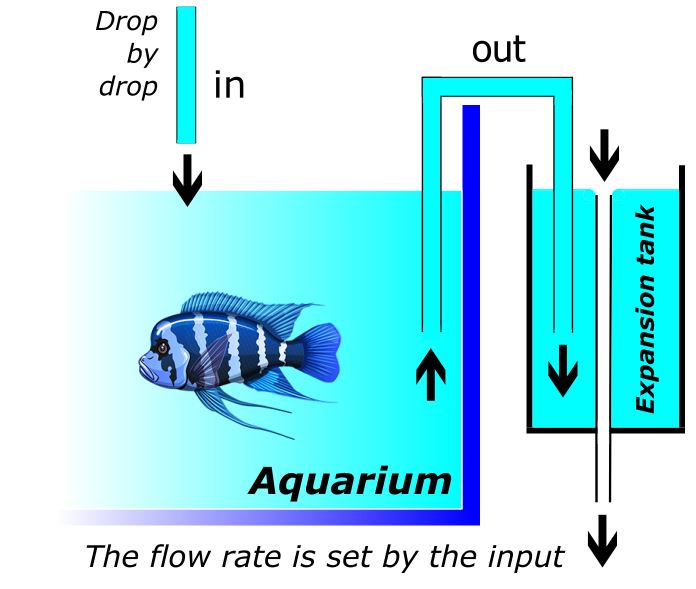For a Cichlids aquarium, one should change at least half of the water every month, because those fish do not tolerate nitrites at all.
Have you ever lugged 500 liters of dirty water in a bucket and then 500 liters of clean water, without getting sciatica and without wetting the entire floor of the house?
To change the water manually, you must really love your fish ... or have a small aquarium.
However, Cichlids hate nitrite-laden water as much as they love large aquariums.
The solution? Automate the water change with a drip system. Not only is it autonomous (no more buckets, pipes and floods), but the change is continuous and smooth, which does not cause an abrupt change in the water composition.
The only condition is to have a drinking water inlet and a waste water outlet close to the aquarium.
Phase 1, the easiest, bring clean water to the aquarium.
To avoid putting chlorinated water in the aquarium, one should let it rest for a few hours so that the chlorine evaporates, and moreover it allows the water to
to reach room temperature.
For this, I use ... a toilet flush placed above the surface of the aquarium so that gravity works for me. Yes, it's not very sexy, it's of course to hide in a nearby room, but it works very well and it's a reliable and cheap device.
From the flush comes a hose that brings the water into the aquarium (a hose used for air pumps is perfect, cheap, flexible, transparent). Then we control the water flow with an air valve, yes the same one used for air pumps.
A drop of water being about 0.05ml, and knowing the volume of water to change in a month, I won't insult you by explaining the rule of three, we then adjust the air valve (that became a water valve, life is change) to set the desired number of drops per minute.
For example, in my case with a flow rate of 200 drops per minute I change about 430 liters per month. Without water on the floor or back pain.
Phase 2, we now have to evacuate the excess water otherwise we will have a little problem...
Here the idea is to put next to the aquarium an expansion vase that will evacuate the overflow, and that's where it's magic, without piercing the glass of the aquarium :)
A drawing being better than a big speech, here's the principle:

For this expansion tank I used pieces of PVC pipes, the ones sold for water drains.
Do not forget to be able to adjust the vertical position of the expansion tank to adjust the water level in the aquarium.
Under the expansion tank a pipe brings the dirty water to your waste water outlet (or to your plants, did you say aquaponics?).
Now you can enjoy two magical effects: the water is changed automatically, and from time to time (preferably when you have guests at the table), everyone hears the sound of a flushing water tank filling up when no one is at the toilet, effect 100% guaranteed.
My system has no more secrets for you, it's up to you now.
(and yes, my diagram is not very sexy, but it's been drawn with love™)